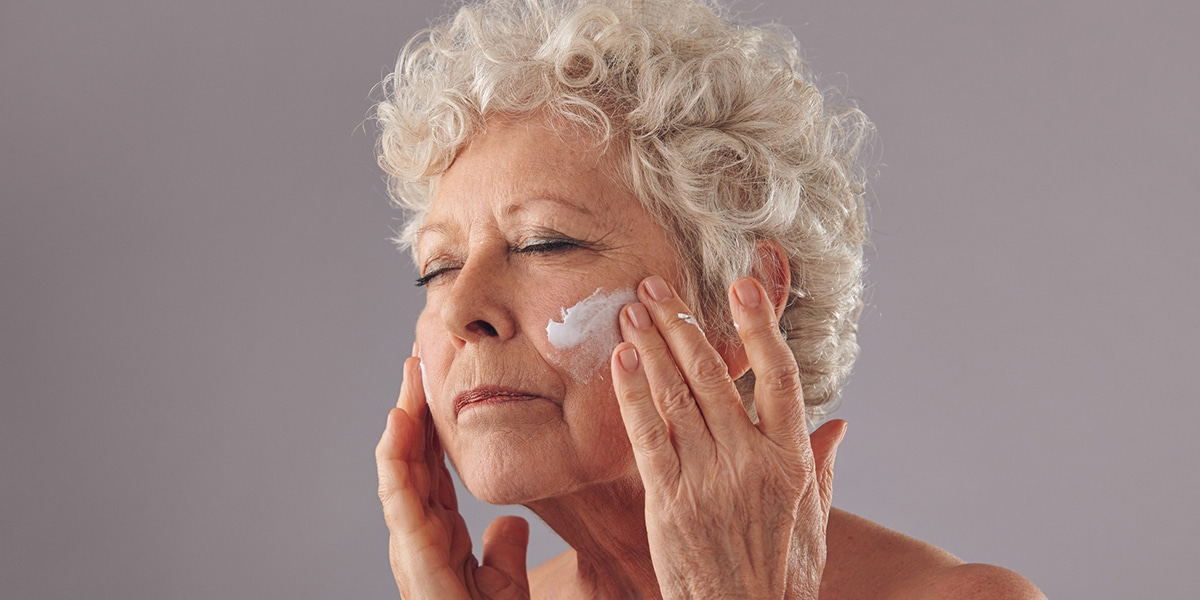There’s a common misconception that the damage done to your skin in your younger years is the damage that dictates whether or not you’ll develop skin cancer later in life. Really, the damage caused by exposure to UV radiation is cumulative, meaning it adds up over your entire life. We can’t go back in time and slap on sunscreen before that pool party in our teen years, but we can still protect our skin from damage caused by future sun exposure¹.
While we can prevent premature aging by using appropriate sun protection methods, we will inevitably experience some signs of aging, no matter how careful we are. This is referred to as intrinsic aging, and it’s a natural part of getting older. Over time, you may notice that your skin loses fat and water, causing it to appear thinner. UV rays penetrate the skin causing damage to skin cell DNA. Thinner skin offers less protection against UV rays, meaning we are more susceptible to this DNA damage in older age. Also, our immune systems weaken with age, meaning that any damage caused by UV radiation is less likely to be repaired when we’re older, compared to when we’re younger².
The American Academy of Dermatology stresses the importance of wearing sunscreen, no matter how old you are. They, along with the Skin Cancer Foundation, also encourage monitoring your skin for abnormal spots³. Keep an eye open for the ABCDE’s of melanoma.The bottom line? Don’t ditch the sunscreen on your 65th birthday. And that goes for sunglasses, hats, and UV protective clothing too. If you’re caring for a senior, take extra care to help them use sun protection when going outdoors, if the UV index is 3 or higher.
Sources:
- Chipps, L. (2014). ASK THE EXPERT: Can I repair or even reverse skin damage? Retrieved July 13, 2016
- Skin Cancer Foundation. (2015). The Sun Keeps Rising: Why Seniors Can’t Skip UV Protection. Retrieved July 13, 2016
- American Academy of Dermatology. (n.d.). Sunscreen FAQs. Retrieved July 13, 2016



